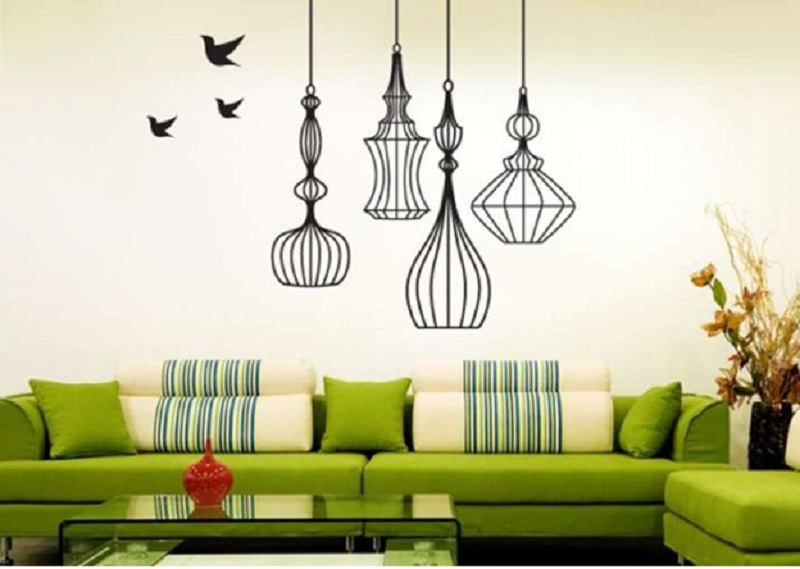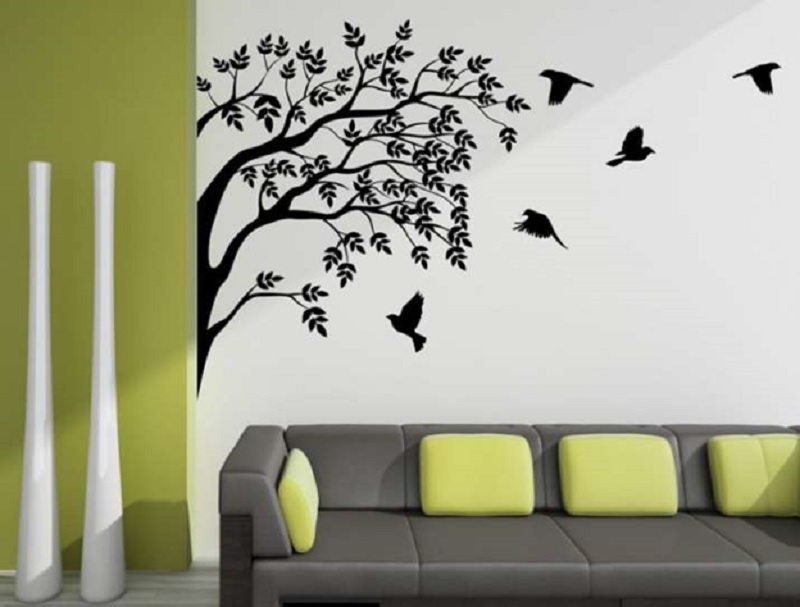Different Ways to Hang Wall Art

In times past, art was used as a means of expression and although it still serves this purpose, today it is also used in decorating homes or workspaces and also as a means of investment. Art brings life to a room due to the beautiful combination of colors, taking away the gloomy and dull appearance.
Art is expressive and one can easily tell about the owner of the house judging from the artworks displayed. Using wall art is also one of the ways to easily express your personality.
Hanging artwork can be messy and unsafe but there are still some safe and clean methods that one can use. Most importantly, the weight and frame should be considered before hanging artwork as this will enable the right space to be selected.
Factors to Consider Before Choosing Artwork

Different arts can be used to decorate the home or office but there are a few considerations to bear in mind before making any purchase. Some of these factors include:
Color
Although buying one with various colors is not a bad idea, an artwork made in black and white has some sort of sophistication and elegance to it. It is also capable of complementing any color in the room.
Scale
The size of the art decor plays a huge part in creating an impact on the aesthetics of the room. A small piece may be insignificant on a huge plain white wall while one that is too big may take up the entire space and make the place look crowded. Always get one with a standard size if you are not sure of the size.
Preferences
It is more ideal to buy what you feel attracted to because art is a personal decision and shouldn’t be made by someone else for you. Make sure you feel a strong connection and can easily relate to it before buying. In this case, allow your instinct to guide you in choosing.
Mix and Match Art
Don’t be rigid in matching traditional art strictly with traditional interior or modern art with modern designs. Mixing the art with a different type of interior creates diversity and spices up the appearance of the room. Try mixing antique and modern or contemporary designs with traditional arts.
Go Bold
When choosing a bold art piece, ensure that another décor is in a simple form as too much boldness could make the room look congested. It should equally align with the color palette to avoid looking out of place. Maintaining a balance will ensure a warm and welcoming interior.
Different Ways to Hang Wall Art
Hanging art on the wall can be a challenge especially doing so without nails because some places have bans against nailing things to the walls. Decorating can however be made easy with available no nail options. Some of them are.
Command Strips
These are adhesive strips used for holding artwork that is lightweight like small frames, poster boards, and posters. Larger pieces would require stronger strips. It comes in various sizes to match whatever size or weight being mounted. It gives a clean look as there is no space between the wall and piece.
Command Hooks and Nails
Unlike the command strip, the command hook is used to hang heavier artworks with the ability to hold over 7 pounds of weight. This is done by placing many of them on a line and using the hanging wire over them for extra support giving it a gallery look. The command nail has a wire brad and can be used in the same way as a hook or strip by hanging your piece on the brad.
Bookshelf Display
Bookshelves can be found in most homes and offices; it also offers a great way to showcase small artworks or even family pictures. Intermixing art pieces with books is attractive and appealing to the eyes. They can also be placed on one side of the shelf with some of the works partly books.
Wall Lean
This is display done on a large piece of furniture, media console, or credenza by simply leaning it against the wall. Slightly overlapping the art using various sizes gives depth to the display. Placing mirrors and large canvas on the floor also creates an impact especially when it starts at foot level.
Use an Easel
This is available in singles or doubles giving you the option of showcasing two artworks on one. Displaying on an easel also gives it a 3-dimensional appeal and is ideal for paying attention to some particular pieces. It is also a suitable alternative to the bookshelf for smaller artworks.
How to Care for Your Wall Art
Taking care of your art pieces is very essential to make it last longer. Asides dusting and cleaning it, there are also other ways to care for your wall art.
Protect from Sunlight
Although the painting may have a protective layer, it could fade or crack when exposed to sunlight for a long time so it’s better to keep it out of extreme temperatures and direct sunlight. Also avoid putting it close to heating or cooling units like radiators, air vents, fireplaces, and AC units.
Use a frame
Framing your artwork is not only for an aesthetic reason but a proper frame also protects the corners so it should be well-made. Frame it under glass as this adds a firm layer of protection and also makes the cleaning process easy. Although this could also make it likely to accumulate mold and damp since moisture accumulates from reduced airflow.
Hang it Properly
Chose a wall that can carry the weight of the art (consider the weight of the frame too). Command hooks can be used by mounting them behind the frame while linking them to a firm wire. Heavy works however require wood studs to be used behind plaster or drywall along with two anchor points to ensure the even distribution of its weight.
Use gloves
Always wear clean gloves when touching the paintings to prevent oil transfer from your skin which is capable of causing damage. Also, carry the frame on both sides to ensure even distribution whenever it is being moved. Lean the canvas only against flat surfaces to avoid stretching.
These are some important things to note about artwork. You can go ahead and get one for your home. If you need tips on how to select one for your home, you can check out this video.
Conclusion
It is more ideal to set the largest piece in the center and smaller pieces around it for an attention-grabbing display when hanging wall art. Small pieces can easily get lost on a huge wall therefore they should be placed in small areas particularly between doorways.
Knowing how to protect your art is important and this includes keeping them away from children and pets as a fall could cause not only damage but also injury.



